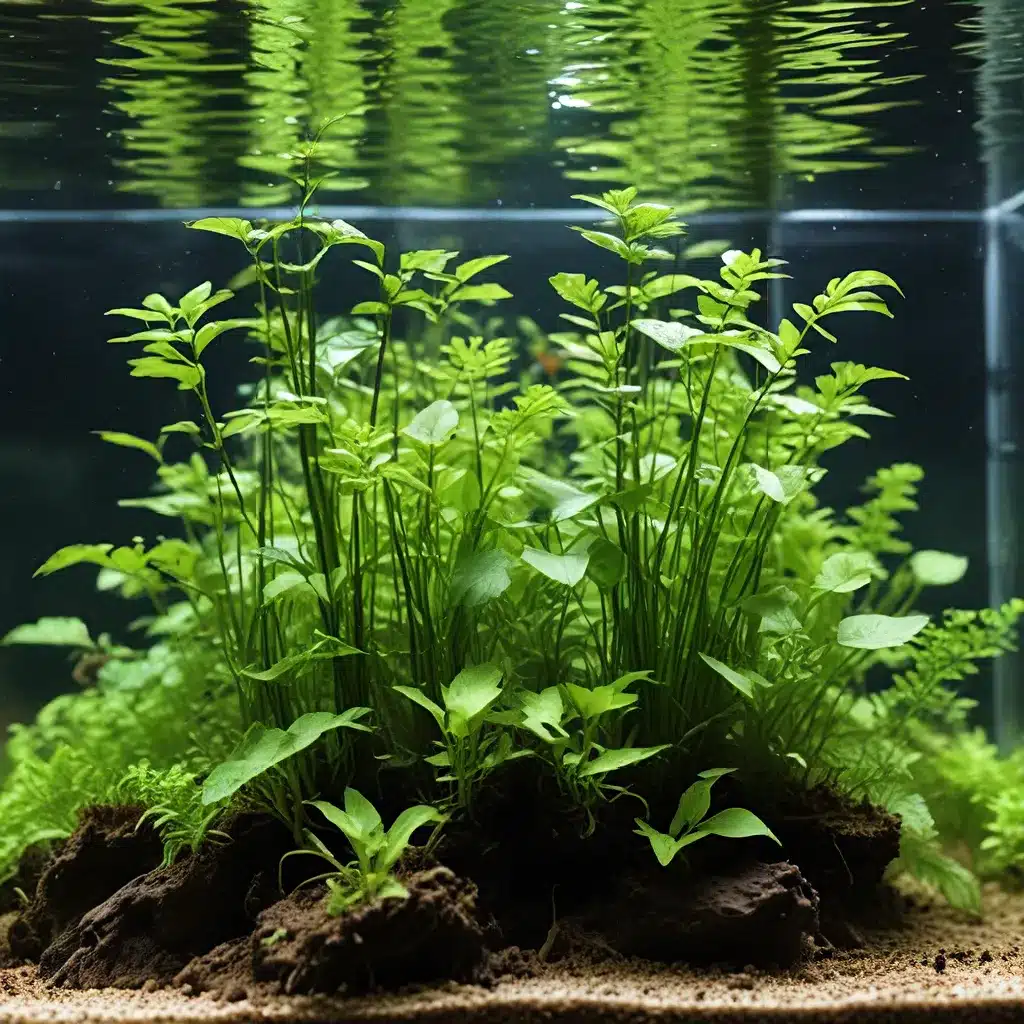
The Art of Water Propagation
Aquarium enthusiasts know the joy of watching their underwater gardens thrive, but maintaining that lush, vibrant display can be a constant challenge. Fortunately, plant propagation offers a secret weapon for expanding your aquarium’s greenery without breaking the bank. By harnessing the power of water propagation, you can cultivate new plants from cuttings and offshoots, multiplying your aquatic oasis with ease.
In this comprehensive guide, we’ll dive deep into the art of aquarium plant propagation, uncovering essential techniques and insider tips to help you efficiently grow your underwater flora. Whether you’re a seasoned aquascaper or a budding enthusiast, these propagation hacks will revolutionize the way you approach plant care in your aquarium.
Mastering the Basics of Water Propagation
At the heart of successful plant propagation lies the water propagation method. This technique involves submerging plant cuttings or offshoots in water, allowing them to develop new roots before transplanting them into the aquarium substrate.
The beauty of water propagation lies in its simplicity. Find a healthy, vibrant plant, take a cutting from a viable stem or node, and place it in a container of water. With the right conditions, the cutting will begin to sprout new roots, signaling the start of its transformation into a self-sustaining plant.
However, the true challenge emerges when it’s time to transition the water-rooted cutting into the aquarium. This is where many aquarists face unexpected hurdles, as the delicate water roots struggle to adapt to the more demanding soil environment.
Ensuring a Seamless Transition from Water to Soil
One of the most critical steps in aquarium plant propagation is the transplant process. Water-rooted cuttings have a distinct disadvantage compared to their soil-grown counterparts: their roots are not as robust or well-adapted to the aquarium substrate.
To overcome this challenge, it’s essential to prepare a specially formulated potting mix that caters to the needs of your water-rooted plants. This mix should be light, airy, and rich in oxygen to mimic the water-based environment the plants are accustomed to.
A recommended recipe for this specialized potting mix is a blend of 40% perlite or pumice, 30% bark chips, and 30% coco coir with worm castings. This combination provides the perfect balance of drainage, aeration, and moisture retention to ensure a smooth transition for your water-propagated plants.
When transplanting, be sure to water the potting mix thoroughly, allowing the excess liquid to drain out. This ensures that the soil remains consistently moist, without becoming waterlogged and suffocating the delicate water roots.
King Aquarium recommends monitoring the newly transplanted cuttings closely, misting them regularly, and avoiding direct sunlight or high-intensity lighting until the plants have had a chance to acclimate to their new terrestrial environment.
Embracing the Diversity of Aquarium Plant Propagation
While water propagation is a popular and effective technique, it’s not the only method for multiplying your aquarium’s plant life. Aquarium plant propagation encompasses a range of strategies, each with its own advantages and considerations.
Stem cuttings, for example, can be an excellent choice for fast-growing, bushy plants like Rotala and Ludwigia. By snipping off healthy stem segments and planting them directly into the substrate, you can quickly establish new growth and fill in bare spots in your aquascape.
Rhizome division, on the other hand, is well-suited for Java fern and Anubias varieties. These plants often develop offshoots or “pups” that can be gently separated and replanted, allowing you to expand your aquarium’s diversity with minimal effort.
For aquarium enthusiasts who prefer a low-maintenance approach, leaf propagation can be a game-changer. Cryptocoryne and Echinodorus species, for instance, can often be propagated by simply floating their leaves in the water column, where they will develop new plantlets over time.
Regardless of the propagation method you choose, the key is to experiment and find what works best for your specific aquarium setup and plant species. By diversifying your propagation techniques, you’ll be able to tailor your approach to the unique needs of your underwater ecosystem.
Optimizing Water Quality for Robust Plant Growth
As you dive into the world of aquarium plant propagation, it’s crucial to remember that the health and vitality of your plants are inextricably linked to the water quality in your aquarium.
Maintaining optimal water parameters, such as pH, temperature, and nutrient levels, is essential for supporting robust root development and promoting lush, vibrant foliage. Regular water testing and targeted adjustments can make all the difference in the success of your plant propagation efforts.
Aquarium enthusiasts also emphasize the importance of water circulation and aeration. By ensuring adequate water movement and oxygenation, you can create an environment that mimics the dynamic conditions plants experience in their natural habitats, ultimately enhancing their growth and resilience.
The Rewards of Sustainable Aquascaping
As you harness the power of aquarium plant propagation, you’ll unlock a world of possibilities for sustainable aquascaping. By cultivating your own plants, you can save money, reduce your reliance on store-bought specimens, and create a truly unique, customized aquarium environment.
Moreover, propagating your own plants can be an incredibly rewarding and fulfilling hobby. Watching your cuttings and offshoots transform into thriving, beautiful plants is a testament to your skills as an aquarist and your commitment to the wellbeing of your underwater ecosystem.
Aquascaping experts encourage aquarium enthusiasts to embrace the art of plant propagation as a way to unleash their creativity and express their unique vision for their underwater oasis.
Cultivating a Lush, Thriving Aquarium Through Propagation
In the dynamic world of aquarium keeping, aquarium plant propagation stands out as a truly transformative practice. By mastering the techniques of water propagation and seamlessly transitioning your cuttings into the aquarium, you can cultivate a lush, thriving underwater garden that captivates the senses and delights the eye.
Whether you’re a seasoned aquascaper or a newcomer to the hobby, these propagation hacks offer a sustainable, cost-effective, and endlessly rewarding approach to maintaining a vibrant, diverse aquarium ecosystem. So dive in, experiment, and watch your underwater greenery flourish like never before.

